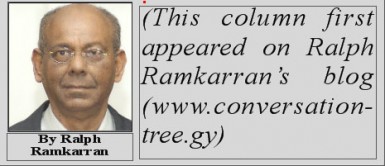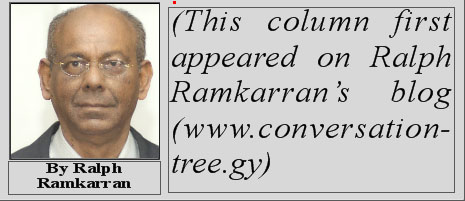An uncharted situation faced the new government after the 2011 elections. Having decided to go it alone as a minority government, a plan for governance designed to create some consensus was expected to unfold. An unstructured tripartite committee was announced but it lost credibility because the government refused to have serious consultations on the 2012 budget, the AFC was left out of the discussions relating to the Linden electricity issue and thereafter refused to participate in discussions because of alleged government recalcitrance on other matters. No structure to generate trust and confidence existed by the time Amaila came around.
In an effort to convince the opposition and critics on Amaila, discussions took place with President Ramotar and Minister Ashni Singh. Mr Winston Brassington and his advisers also had discussions with critics. Documents were handed over. The chief public spokespersons for the government defending the project and answering critics were President Ramotar and Minister Singh, although others, including Mr Brassington weighed in occasionally. There was no organized public information campaign or effort to supplement, expand and define on a daily basis what they had to say. On the other hand, the opposition and other critics were in the media every day.
The result was that important questions were not answered either at all or in a timely manner and others were answered only partially. There was no effort to take the offensive, to anticipate what the critics were likely to raise, and answer them beforehand, bearing in mind the suspicions surrounding the project. The result was that the narrative of the opposition and the critics gained ascendancy and enough traction to enable APNU to argue in justification of its negative vote in the National Assembly.
 It appears that Guyana was unable to obtain the optimum terms from Sithe Global. This rarely ever happens. Compromises, sometimes painful ones, are necessary in negotiations such as these. But taking everything into consideration, including the importance of hydroelectricity for Guyana’s development, the actual cost, the cost to the country arising from a delay of organizing a new project or projects around the Potaro Basin and the growing demand for electricity, Amaila ought to have been supported, at the very least until the IBD study was completed.
It appears that Guyana was unable to obtain the optimum terms from Sithe Global. This rarely ever happens. Compromises, sometimes painful ones, are necessary in negotiations such as these. But taking everything into consideration, including the importance of hydroelectricity for Guyana’s development, the actual cost, the cost to the country arising from a delay of organizing a new project or projects around the Potaro Basin and the growing demand for electricity, Amaila ought to have been supported, at the very least until the IBD study was completed.
Some of the most important questions which were raised included (i) the cost of electricity to the consumer after the construction of Amaila, (ii) whether Guyana would have to go into debt, (iii) Sithe Global’s financial commitment, (iv) the rate of return, (v) the inadequacy of Amaila by the time it comes on stream and (vi) absence of a plan for the development of the Potaro Basin. The first was never answered or adequately answered. The second had no relationship to the viability of the project. The third was never fully clarified. The fourth could have been defended. The fifth is no reason not to proceed with Amaila because without it the situation will be far worse. The sixth is giving up the bird in the hand for two in the bush.
Answers needed to be in the media every day, not merely as a response to the critics, but as a public information activity in an effort to mobilize public support. But this was never done. The distinct impression created was that no seriously organized public information effort went into the promotion of Amaila and the questions were dealt with on an ad hoc basis by persons who were otherwise heavily engaged with other daily activities.
There was no government website to answer in a timely manner all the questions which were being raised. Attractive publications arguing the case for Amaila were absent. Such publications as came out in the state press were unattractive and uninteresting.
No one watched government spokespersons on television. Credible engineers and financial experts were not engaged to promote the project and debate with the critics.
There appeared to be reluctance to deal with certain critical issues, even if unpalatable, such as the cost of electricity to the consumer. Even if the cost would not have gone down initially, the public ought nevertheless to have been told. This could have been defended. Instead the government allowed the critics’ accusation of deception to take hold. The Sithe Global website did not deal with this and other important issues.
As a result the narrative on Amaila was dominated by the opposition and the critics. With the suspicions about corruption and accusations about inadequately negotiated deals, it is hardly a surprise that APNU said that it was not convinced. But the public relations disaster that really took the cake was accusing APNU of being criminals and terrorists at the PPP Congress one week before the crucial vote in the National Assembly. This major faux pas alone should convince the government that public relations is serious business and ought not to be left to politicians. It needs to be conducted in the future on an organized basis by professionals. If the lesson of Amaila is not learnt, the new airport and the specialty hospital will go the same way unless lawful extra-budgetary ways are found to contribute government’s share of the finance, if this is required.






